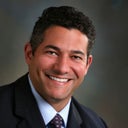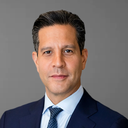What are the main limitations of closed rhinoplasty? And how much work can be done on the tip in closed rhinoplasty, if any?
Answers (17)
From board-certified doctors and trusted medical professionals
Dr. Otto Joseph Placik, MD

Dr. Otto Joseph Placik, MD
Board Certified Plastic Surgeon
Answer
Dr. Toby Mayer, MD

Dr. Toby Mayer, MD
Board Certified Facial Plastic Surgeon
Answer
Dr. Michael A. Persky, MD

Dr. Michael A. Persky, MD
Facial Plastic Surgeon
Answer
Dr. Jeffrey E. Schreiber, MD, FACS

Dr. Jeffrey E. Schreiber, MD, FACS
Board Certified Plastic Surgeon
Answer
Dr. Amir M. Karam, MD

Dr. Amir M. Karam, MD
Board Certified Facial Plastic Surgeon
Answer
Dr. Tanveer Janjua, MD

Dr. Tanveer Janjua, MD
Board Certified Facial Plastic Surgeon
Answer
Dr. Steven J. Pearlman, MD, FACS

Dr. Steven J. Pearlman, MD, FACS
Board Certified Facial Plastic Surgeon
Answer
Dr. Ryan Greene, MD, PhD
Dr. Ryan Greene, MD, PhD
Board Certified Facial Plastic Surgeon
Answer
Dr. William Portuese, MD
Dr. William Portuese, MD
Board Certified Facial Plastic Surgeon
Answer
More Rhinoplasty Questions
See all Rhinoplasty Q&AWE SEND PRETTY
EMAILS
What’s trending? Who’s turning heads? Which TikTok myths need busting? We’ve got you. No fluff, no gatekeeping—just real talk. Get our free, unfiltered newsletter.
